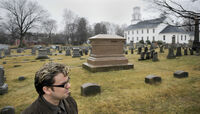Season 1 is the first season of Deadly Women which was first aired on February 8, 2005 and ran for three full episodes (with four cases per episode) ending its run on February 22, 2005.
Each of the three original episodes covered the cases of various groups of women who were united by the central theme of the episode. These three episodes of the show were narrated by Marsha Crenshaw.
Unlike the future seasons of the show, this one covered four cases of Deadly women per episode. This was changed to episodes that covered three cases per episode in the later seasons.
Format[]
Each episode has a unifying theme such as jealousy, financial gain, mental illness, or crimes committed by teenagers or the elderly. The titles of the episodes reflect the theme. The stories are told through re-enactments and interviews.
Episodes also feature contributors in relevant fields (e.g. law enforcement, the law, the media, forensic medicine and medicine). Diane Fanning, M. William Phelps, Gregg Olsen, Wensley Clarkson, and Dr. Janis Amatuzio have made multiple appearances. Occasionally, family or friends of the subject or their victims appear to add context and or perspective.
At the end of each segment, the actress playing the subject (and her male and female conspirators, if any) break the fourth wall and look directly at the camera as their fates are revealed. In later seasons, photos of the actual subject are shown.
Episodes[]
| Image | Title | Airdate | Season Episode | Series Episode | |||
|---|---|---|---|---|---|---|---|
 |
"Obsession" | February 8, 2005 | 1 | 1 | |||
| In 17th century Central Europe, Elizabeth Báthory, a Hungarian noblewoman, was obsessed with youth and beauty. According to legend, Báthory murdered as many as 650 young women, believing that drinking their blood would preserve her youth. Báthory became known as the "Blood Countess."
In Romania during the 1920s and '30s, Vera Renczi's fears of infidelity and abandonment ostensibly caused her to murder the men in her life. Renczi poisoned her husbands, lovers and one son with arsenic before placing their bodies in zinc-lined coffins in her wine cellar. In New Orleans during the early 19th century, French socialite Delphine LaLaurie was believed to be a cruel sadist who beat, tortured, and performed medical experiments on slaves in the basement of her mansion. And in Washington State, Linda Hazzard, a doctor and a delusional "fasting specialist," believed she could "heal" her patients through exhausting diets and starvation. Hazzard's practice of starvation resulted in the death of a visiting English heiress in 1911. | |||||||
 |
"Greed" | February 15, 2005 | 2 | 2 | |||
| In the early 1900s, on a small farm in La Porte, Indiana, Norwegian immigrant Belle Gunness used strychnine to poison her suitors and boyfriends before feeding their remains to the hogs. Gunness's motive was to collect life insurance, cash and other valuables from her victims.
Between 1907 and 1917, in Windsor, Connecticut, nursing home proprietor Amy Archer-Gilligan purchased life insurance policies on her elderly residents before poisoning them with arsenic. In Cordele, Georgia, greed led Janie Lou Gibbs, a church going mother and grandmother who once ran a day-care center, to poison her three sons, a grandson and her husband in the 1960s for the sole purpose of collecting life insurance. And during the 1880s in Liverpool, England, sisters Catherine Flannigan & Margaret Higgins worked together to poison their own family members in an attempt to claim insurance payouts. The two sisters became known as "The Black Widows of Liverpool". | |||||||
 |
"Revenge" | February 22, 2005 | 3 | 3 | |||
| Katherine Knight brutally stabbed her de facto husband to death before dismembering him and using parts of the body to cook up a grisly stew.
Blanche Taylor Moore used arsenic poisoning to kill her loved ones. Ruth Ellis shot her boyfriend to death after he caused her to miscarry. The Lainz Angels of Death gave nurses a bad name, murdering at least 49 of their patients. | |||||||
